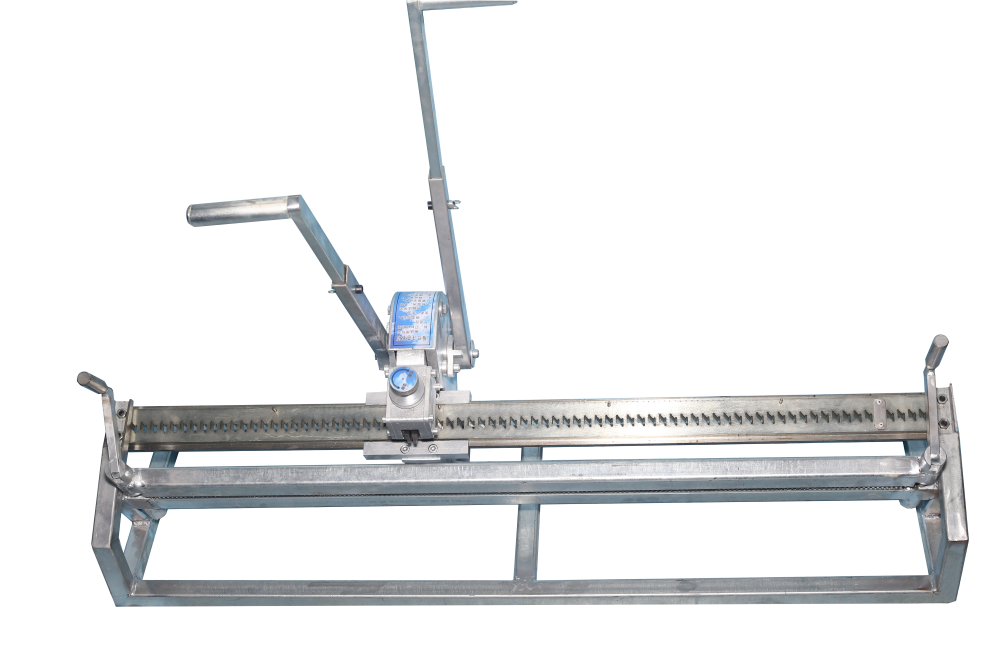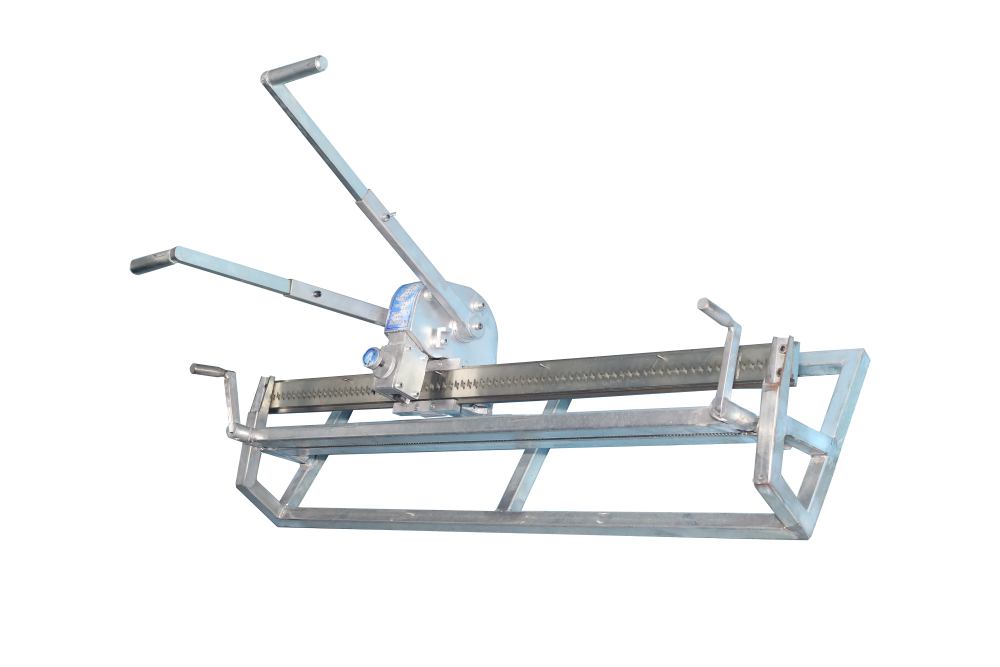Mineral called bioleaching bacteria, it is the use of catalytic action of certain microorganisms, so that the metal ores dissolved out. For example, there is a sulfur-oxidizing bacterium which has the ability to oxidize elemental sulfur to form sulfuric acid in solution. Another type, iron oxidizing bacteria, has the ability to accelerate the oxidation of FeSO 4 to Fe 2 (SO 4 ) 3 , which greatly increases the Fe 2 (SO 4 ) 3 content in the solution. The H 2 SO 4 and Fe 2 (SO 4 ) 3 solutions are effective solvents for sulfide ore and other minerals.
For example, pyrite is generally contained in polymetallic sulfide ore. In the presence of water and oxygen, pyrite is slowly oxidized and FeSO 4 and H 2 SO 4 are formed . The reaction formula is:
Chemical action 2FeS 2 +70 2 +2H 2 O ————→2FeSO 4 +2H 2 S0 4
Ferric bacteria in the presence of aerobic and sulfuric acid, the FeSO 4 is oxidized to Fe 2 (SO 4 ) 3 at a very fast rate, the reaction formula is:
1 Bacterial action 2FeSO 4 +H 2 S0 4 +——O 2 ————→Fe 2 (SO 4 ) 3 +H 2 O
2
Fe 2 (SO 4) 3 can minerals dissolved out of the metal, for example, when the luminance copper ORE, can generate CuSO 4, FeSO 4 and S, the reaction is:
Cu 2 S + 3Fe 2 (SO 4) 3 - → 2CuSO 4 + 4FeSO 4 + S
The FeSO 4 produced by the above reaction can be reoxidized by the iron oxidizing bacteria to form Fe 2 (SO 4 ) 3 , and the reaction is repeatedly circulated in the solution, and the leaching is carried out continuously. If sulfur oxidizing bacteria are present in the solution, the S formed by the reaction is oxidized by the sulfur oxidizing bacteria to form H 2 SO 4 , which is more effective for the leaching of ore. The reaction formula is:
Bacterial action 2S+30 2 +2H 2 0 ————→2H 2 S0 4
Advantages of bacterial leaching: (1) Simple equipment and convenient operation, (2) Suitable for treating poor ore, waste ore, tailings and slag, etc. (3) Comprehensive leaching and comprehensive recovery of various metals, (4) Currently The bacterial leaching process of copper and uranium is relatively mature, and the copper leaching solution can recover copper by extraction-electrowinning method or iron displacement-flotation method.
The main disadvantage of bacterial leaching is that the cultivation of bacteria is troublesome and the leaching period is relatively long.
There are many examples of application of bacterial beneficiation in China, such as a copper mine in Guangdong, bacterial leaching in an old mining area in a copper mine in Anhui, and a copper mine in Hunan. This paper introduces the application of bacterial leaching to treat copper-bearing tailings in a copper mine in Hunan.
A large number of flotation tailings and re-election tailings exist in a copper mine in Hunan. The flotation tailings contain 0.11%~0.20% copper; the re-election tailings contain 2.25%~1.50% copper, and both tailings contain Rare metal.
The process of bacterial leaching of tailings is shown in the figure below. Since the tailings have a fine particle size, the leaching tank is used for leaching. First add acid, acidified water and alkaline gangue in ore. When the pH value reaches about 2.0, add the leaching solution containing high iron (Fe 3+ ) to circulate and leaching until the concentration of copper and rare metals in the immersion liquid is very low. . Then add a copper, rare metal bacteria infusion, when the concentration of the leachate is lower, and then wash for 2 to 3 days to discharge. [next]

Leaching pool number | Feeding amount (tons) | Sulfuric acid consumption (kg/ton) | Temperature (°C) | Leaching cycle | copper(%) | Rare metal leaching rate (%) | ||
Raw ore | Leaching | Leach rate | ||||||
1 2 3 | 100 100 100 | 34 32 30 | 25~35 25~35 25~35 | 27 18 28 | 0.81 1.25 1.51 | 0.17 0.48 0.44 | 79.02 61.60 70.86 | 86.4 51.85 80.37 |
The tailings leaching time is 20 days and the leaching results are listed above.
After the rare metal in the leachate is adsorbed, the tail liquid contains about 1.5~2.0 g/L of copper, and the copper is precipitated into sponge copper by the iron replacement method. The chemical reaction formula is:
Fe+CuSO 4 —→FeSO 4 +Cu↓
(1) The higher the copper content of the replacement liquid, the better, the iron content should be as low as possible, pH = 1.8%~2.0;
(2) When the pH value of the solution is about 1.5, the copper concentration is 2~4g/L, the iron consumption ratio is 2.0~2.5 times of copper; when the pH value is about 2, when the copper concentration is high, the iron consumption ratio is 1.5 times that of copper;
(3) Iron replacement time, which is related to temperature, quality and quantity of scrap iron, acidity of solution and replacement method. Generally, when the temperature is greater than 20 ° C, in the case of ventilation, the replacement can be completed in six hours;
(4) Discharge the tail liquid immediately after the replacement, adjust the Fe 2+ concentration and acidity in the tail liquid, and return to the bacterial culture solution for use.
The main technical and economic indicators:
(1) The total recovery of copper is 70%~75%; the total recovery of rare metals is 75~80%;
(2) Sponge copper grade 60%~650%;
(3) 40%~45 kg of sulfuric acid per ton of mine; 2.5 tons of iron per ton of copper;
(4) The cost of converting pure metal copper per ton is 2,000 yuan.
High-strength strap-Clinching Machine is Equipped With Lever Devices and matches with T10 Conveyor Belt Fasteners. With its reasonable and novel design, excellent performance, accurate location and the utilization of jointed arms and cams, it is highly efficient in transmission mechanism. The whole machine can be disassembled into two parts, which makes it portable. It also has the advantages of good performance, high precision and long service life.


Belt Riveting Machine,Snap Installation Tool,Fastener Installation Tool,Equipped With Lever Devices
Huozhou Coal and Electricity Group Bailong Industry and Trade Co., Ltd. , https://www.hltransportbeltbuckle.com
![<?echo $_SERVER['SERVER_NAME'];?>](/template/twentyseventeen/skin/images/header.jpg)